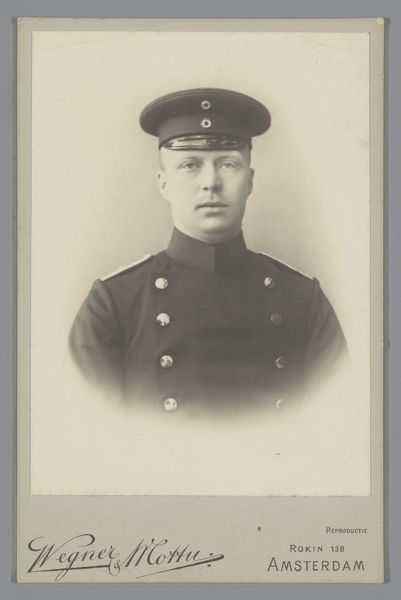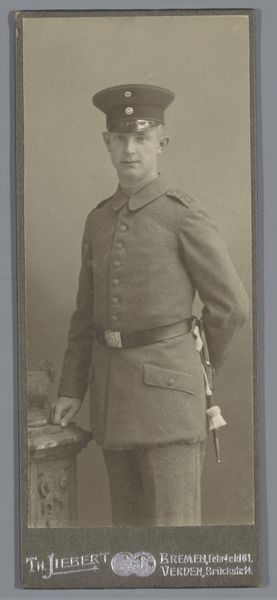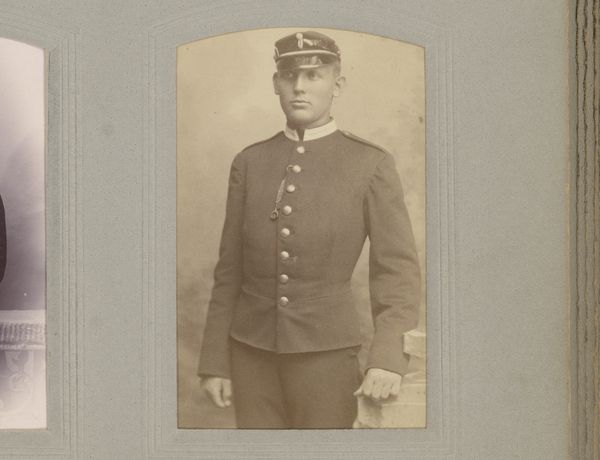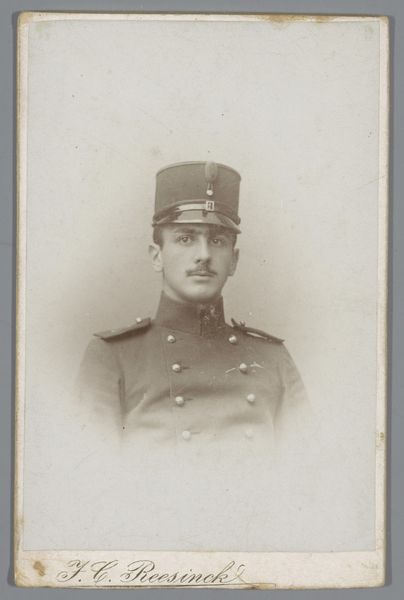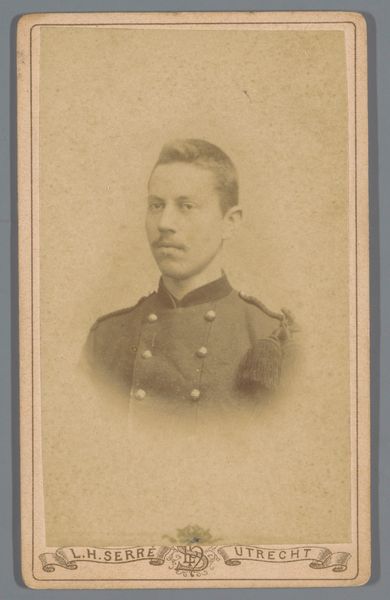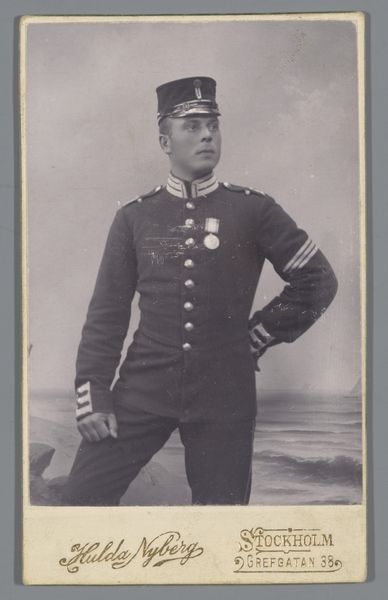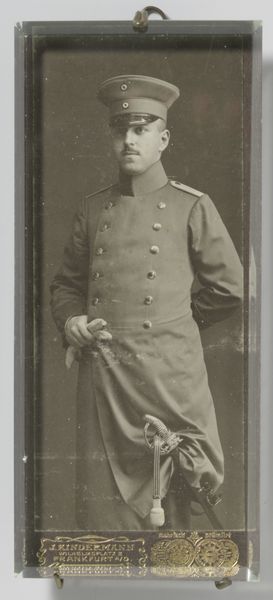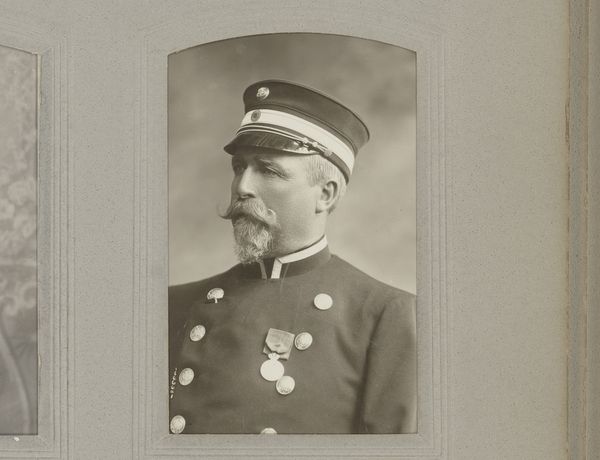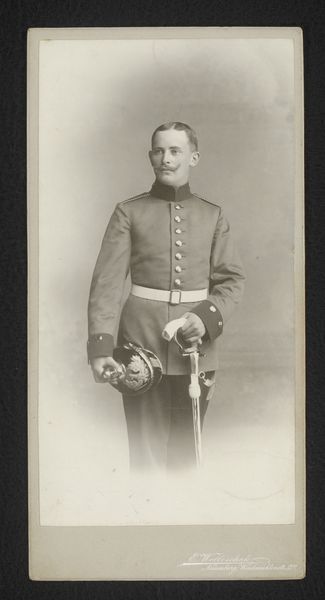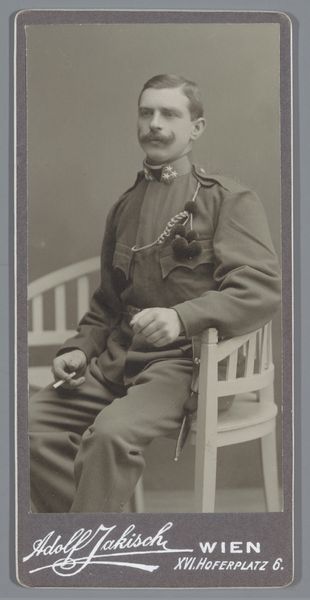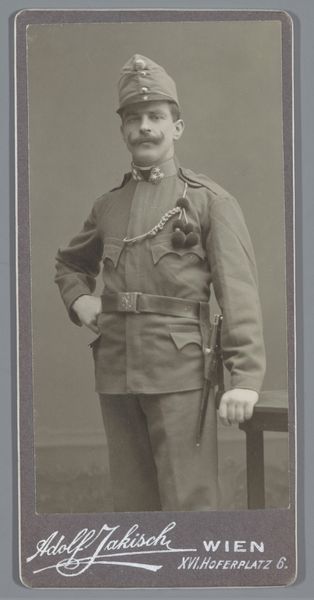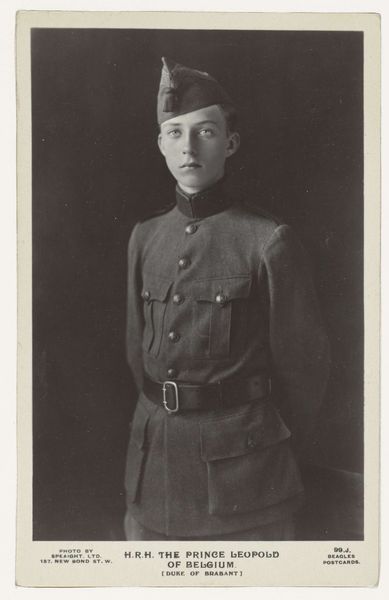
photography, albumen-print
#
portrait
#
photography
#
historical photography
#
historical fashion
#
19th century
#
modernism
#
albumen-print
#
realism
Dimensions: height 121 mm, width 65 mm
Copyright: Rijks Museum: Open Domain
This small portrait, by August Kaegbein, is a photographic print, likely made around the time of the First World War. Photography in this era was a complex chemical process, involving the meticulous application of light-sensitive emulsions to paper. Consider how the photographer's studio, identified here at the bottom of the print, played a vital role in shaping individual identity. Uniforms, like the one worn by this unknown man, were mass-produced symbols of military might and national identity. Photography democratized portraiture, making it accessible to a wider segment of society, yet studios like Kaegbein's also offered a space for individuals to perform and solidify their social roles, capturing these performances and preserving them in print form. While the photograph appears to be a straightforward representation, it is important to understand it as a carefully constructed artifact, shaped by both the photographer's craft and the subject's desire for self-representation. By looking closely at the materials and processes involved, we can gain a deeper appreciation for the cultural significance of even the most seemingly simple images.
Comments
No comments
Be the first to comment and join the conversation on the ultimate creative platform.
